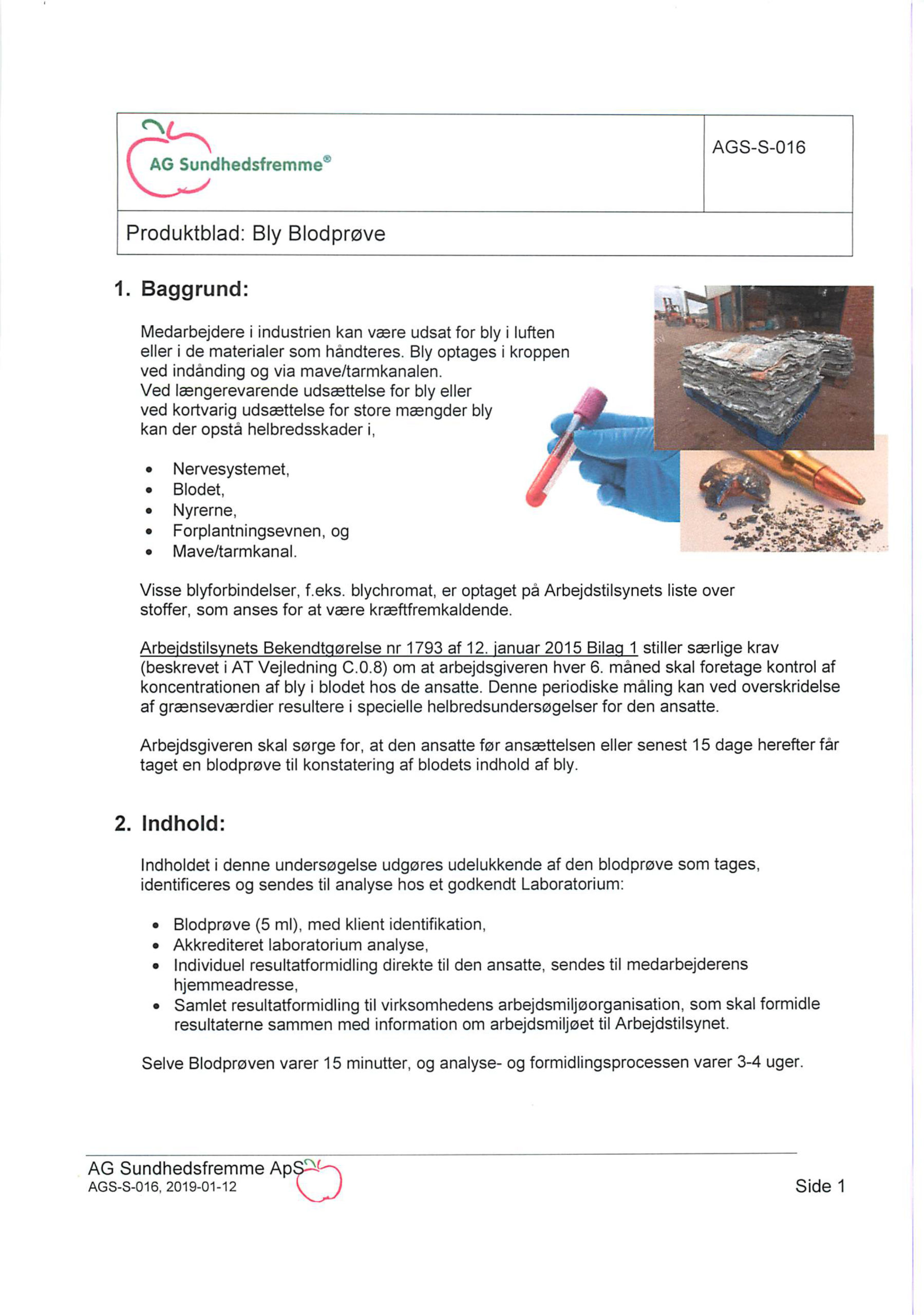In buildings, pure lead is most commonly used in roofing and in paints, varnishes and varnish products, but is also used in electronics as a solder as well as in accumulators for cars etc. Metallic lead is also used for radiation shielding and protection against X-rays.
Lead in the blood
Industry employees may be exposed to lead in the air or in the materials being handled. Lead is absorbed into the body by inhalation and via the gastrointestinal tract.
Prolonged exposure to lead or short-term exposure to large amounts of lead can result in health damage to –
- The Nerve system,
- The Blood,
- The Kidneys,
- The reproductive capacity, and
- The Stomach / intestinal tract.
Certain lead compounds, e.g. lead chromate, is included in the Danish Working Environment Authority’s list of substances that are considered to be carcinogenic.
The Danish Working Environment Authority Order no. 1793 of 12 January 2015 Appendix 1 sets special requirements (described in AT Guide C.0.8) that the employer every 6 months must check the concentration of lead in the blood of the employees. This periodic measurement, if limits are exceeded, may result in special health examinations for the employee.
Work processes and professional groups where there may be a risk of exposure to lead:
- Metal Foundries,
- Accumulator factories,
- Car Radiator/Cooler Companies
- Soldering and brazing,
- Demolition,
- Cable Burning,
- Furniture acidification.
- Electronic soldering can make a small contribution, especially in the absence of local ventilation.



